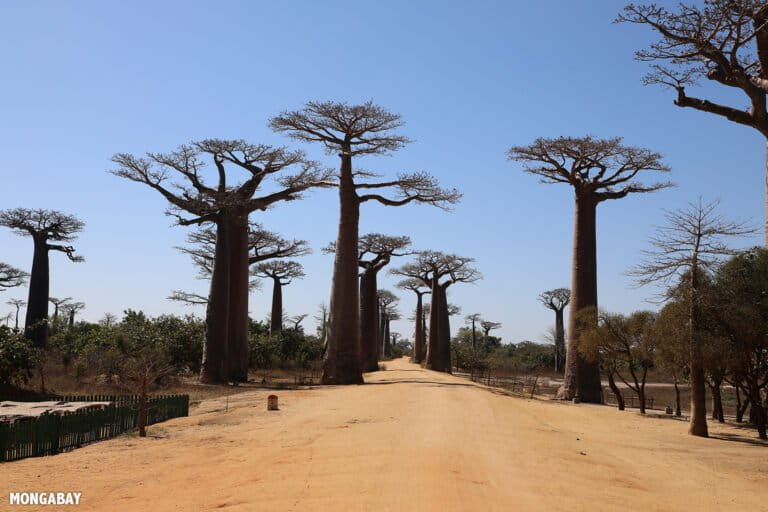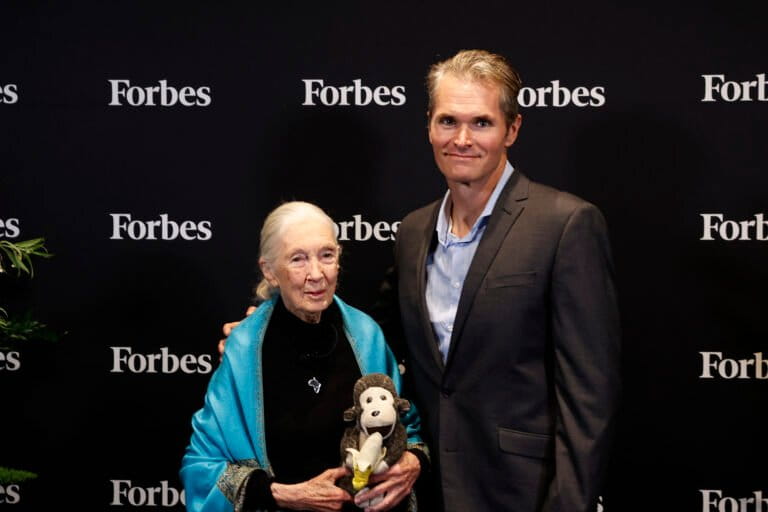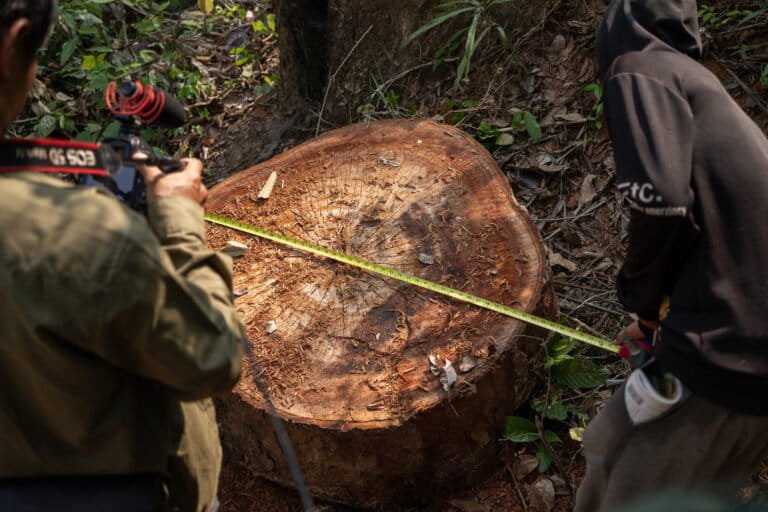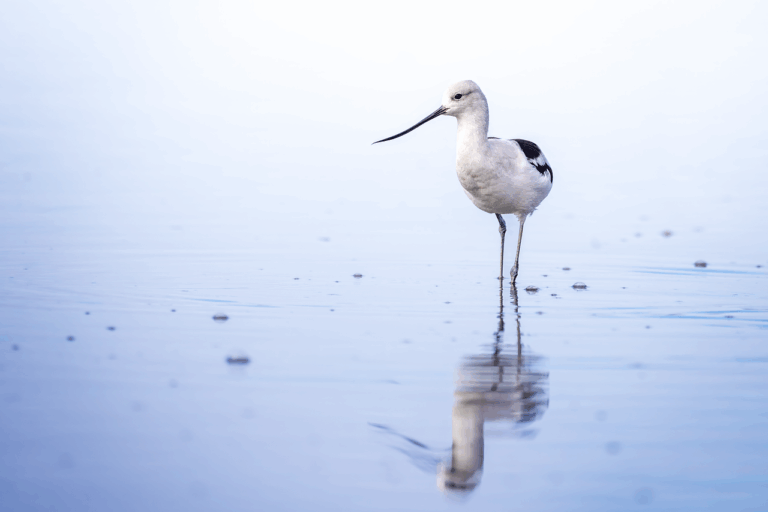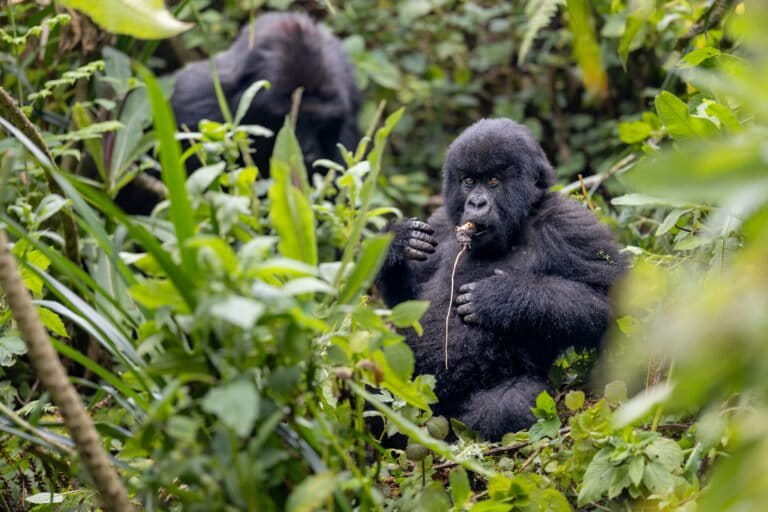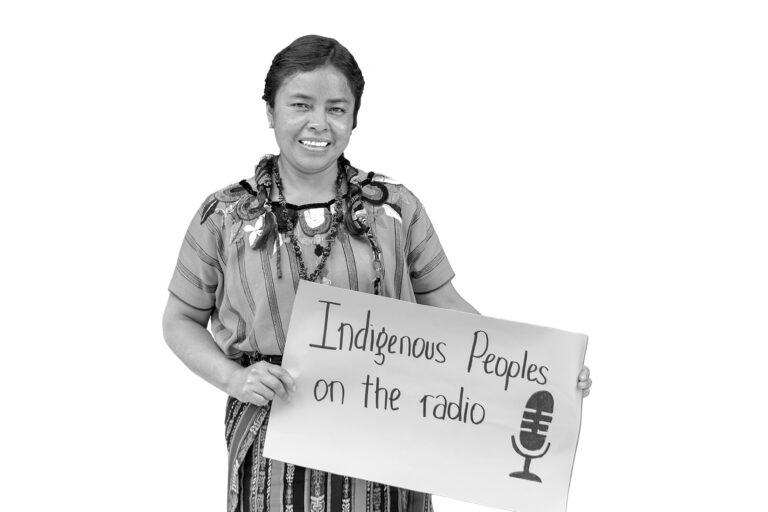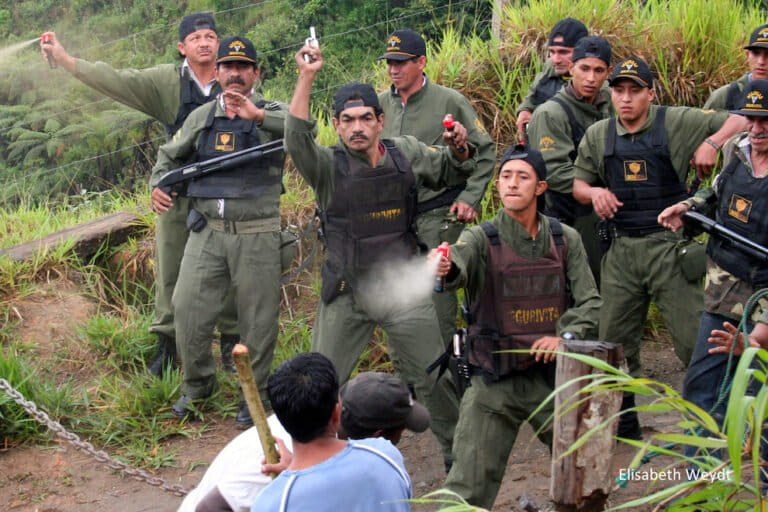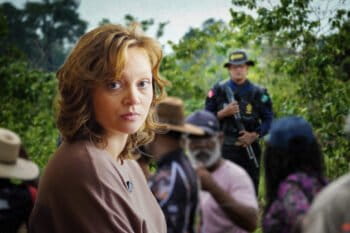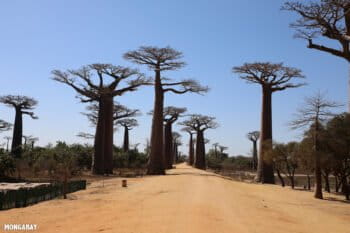Patricia Wright, a pioneering primatologist who established the Centre ValBio research station in Madagascar, began her work there in 1986. As the person who first described the golden bamboo lemur (Hapalemur aureus) to Western science, her contributions led to the creation of Ranomafana National Park, now a UNESCO World Heritage Site. She joins the Mongabay Newscast to discuss her conservation breakthroughs and the challenges the island faces during political instability and widespread poverty.
“Poverty is the enemy of conservation here in Madagascar,” Wright says.
Solutions are challenging in an island nation where roughly 80% of its people are impacted by poverty, as well as deforestation, fires and political violence. To address these issues, Wright says investing in reforestation, education and health care is a way forward, but these steps must go hand in hand with conservation efforts.
“I think both health and education are very important, and I started out at the very beginning, incorporating those into our conservation programs, but it has to be connected to the fact that [people] have forests,” she says.
Wright has participated in the making of numerous documentaries over the years, including Island of Lemurs: Madagascar, narrated by Morgan Freeman, and recently Ivohiboro: The Lost Forest and Surviving Alone: The Tale of Simone.
In this conversation, she describes key findings from the latter two films, including how Ivohiboro, a montane tropical forest surrounded by desert, was unknown to Western science until Wright set foot there in 2016. Films like these are a crucial part of marketing conservation, wildlife and places such as Madagascar, Wright says.
“It plays a pivotal role in the public understanding what the real issues are. I think the films [are] very important to get across the idea that there is a biodiversity crisis.”
Take a minute to let us know what you think of our audio reporting, which you can do here.
The Mongabay Newscast is available on major podcast platforms, including Apple and Spotify. All previous episodes are accessible on the Mongabay website.
Mike DiGirolamo is a host & associate producer for Mongabay based in Sydney. He co-hosts and edits the Mongabay Newscast. Find him on LinkedIn and Bluesky.
Banner Image: Baobab Alley in Madagascar. Image by Rhett A. Butler/Mongabay.
Related Listening:
Listen to this conversation with a botanist and conservationist working on protected areas and bioacoustics in Madagascar from Mike Gaowrecki in 2020:
Transcript
Notice: Transcripts are machine and human generated and lightly edited for accuracy. They may contain errors.Patricia Wright: I think before that cartoon film Madagascar came out, nobody knew what Madagascar was. And of course now they think it’s a movie, which is maybe one of the drawbacks. But if you show people what the situation is in Madagascar—with its unique and extraordinary species and the dire crisis that we’re in, with forests being destroyed and the habitats of all the biodiversity being destroyed—I think people respond to that and they’ll help.
Madagascar is an island that needs our help right now because of this extinction crisis. We’re on the brink of the extinction crisis here in Madagascar, and people don’t realize that. I don’t think they realize how unique these species are, how far back in time they go, and how much we can learn from these species that will be interesting for us, but also help us in our research about humans.
Mike DiGirolamo: Welcome to the Mongabay Newscast. I’m your co-host, Mike DiGirolamo, bringing you weekly conversations with experts, authors, scientists, and activists working on the front lines of conservation, shining a light on some of the most pressing issues facing our planet and holding people in power to account. This podcast is edited on Gadigal land.
Today on the newscast, we speak with Patricia Wright, a primatologist and conservationist well known for her work in Madagascar, as well as for establishing the Institute for the Conservation of Tropical Environments at Stony Brook University and the Centre ValBio research station in Madagascar.
Her work over the past four decades has led directly to the description of the golden bamboo lemur in Ranomafana National Park and the establishment of that national park itself in 1991. We discuss this process and what the Centre ValBio contributes to the conservation of biodiversity in the island nation.
Wright has been involved in, and continues to contribute to, documentary filmmaking efforts, which she explains are vital for popularizing and marketing the biodiversity of Madagascar, as well as other regions of the world. We discuss the secluded montane rainforest known as Ivohiboro, where Wright was the first Western scientist to set foot in 2016, and what she has learned from this expedition.
We discuss the greatest successes and challenges of conservation in Madagascar, how political instability and the recent coup have affected her work and conservation in general. Wright stresses the importance of investing in the education and health infrastructure for Malagasy people, 80% of whom currently live in poverty, in conjunction with increased biodiversity protection. She says that these things must go hand in hand in a nation like Madagascar, where 90% of its wildlife is endemic and occurs nowhere else in the world. Wright emphasizes the importance of protecting this truly unique island.
Mike: Patricia Wright, welcome to the Mongabay Newscast. Thank you for joining us.
Patricia: Thank you for inviting me.
Mike: Patricia, can you please tell us: what is the Centre ValBio in Madagascar, and what does it research?
Patricia: The Centre ValBio in Madagascar is one of the few research stations that’s really on the edge of the rainforest. It’s a research station that is not only about biodiversity research, but also research on health and education.
It has modern facilities like genetics and infectious-disease labs, an herbarium, and an insect collection, and we’re working on a database to put it all together.
Mike: And you’ve been conducting research in Madagascar since 1986. What brought you there initially, and why did you end up staying?
Patricia: I began my studies in 1986 when I arrived in Madagascar to find out whether Hapalemur simus, the greater bamboo lemur, was extinct or not, because nobody had seen it for years.
So I went to all the places where it had last been observed, to try to find out whether I could find some living individuals. I searched for a long time, and then I found them in Ranomafana, in the forest near Ranomafana. It wasn’t a park then.
At the same time, I discovered a brand-new species to science, the golden bamboo lemur.
So there I was, very excited, because we had the golden bamboo lemur—a new species to science—and the greater bamboo lemur that we thought was extinct in the same forest.
When I started my research, the timber exploiters came in. The loggers came in and they started to take out the big trees, doing everything by hand. Local village people were chopping down huge trees by hand and taking them out of the rainforest to load onto trucks, to be shipped to people who would make furniture out of these precious hardwoods.
Of course, the impact on the forest was disastrous. One huge tree, when it falls, takes down about nine individual trees that they didn’t use. So the whole forest was being destroyed, and I was not happy.
So I went to the capital and talked to the Department of Water and Forests. I told him it was very important that he protect that area because of our new discoveries. He said, “These loggers have concessions. I signed them myself.”
And I said, “But this forest has to be protected.”
He said, “Patricia, you are in Madagascar. It’s one of the poorest countries in the world. We can’t afford to make that a protected area. We can’t make the maps and build the infrastructure and train the people to make a national park.”
Then he stopped and looked me straight in the eye and said, “But if you find the funds to make a park, we’ll work with you to make that happen.”
Then he ushered me out of his office. I stood there—an assistant professor. I had just started my career, and I knew if I devoted my energies toward making a national park, I wouldn’t be able to write all those publications I had to write to get tenure.
But if those animals went extinct on my clock, how could I live with myself?
So we got the money. We made the national park in 1991. In 2007 it became a World Heritage Site, and we’ve been building since that time.
Mike: That’s incredible. And that must have been really difficult, navigating your career as a researcher at the same time, because as you mentioned, you have to do all those publications and get grants for your research to get tenure.
There is a lone greater bamboo lemur, I believe in Ranomafana. It’s called Simone, and her story is documented in a film called Surviving Alone: The Tale of Simone. Her isolation has been studied in this film. What was found from this?
Patricia: It’s amazing, because we talk a lot about species going extinct, and it’s a crisis of our time—which it is—but I don’t think any of us really think what that means to the animals. What it really means to be the last of your species in an area.
This film, done by a young UK director, really brings it home. Here she is, trying so hard to find a mate that she actually spends time with a closely related species that treats her as “bigger than them.” She’s almost twice the size of the golden bamboo lemurs, and they think that—she’s twice the size and not quite the same as them.
She has a lot of really disturbing issues, socially and emotionally.
I think the film—this very short documentary that’s going to be shown at the Toronto Soundscape Documentary Film Festival in December—really touches people more than our general talk about species going extinct. Because this is a personal experience of an animal that has to face that dilemma.
Mike: And Simone in her isolation started spending more time with golden bamboo lemurs. What was interesting about that? What did you find?
Patricia: First of all, we saw that she would listen for their calls so she would know where a group was located. Then she would go to them, and the adults would ignore her and move away from her—“she doesn’t belong to our group.”
But some of the juveniles would start to play with her. It took about two or three weeks before they started to play with her and groom her, and that means— in lemur language—that they accept her. Then after a couple of hours she would go off on her own again.
She started spending more and more time with the golden bamboo lemur group. It seemed like, at least until we could get others of her species into the national park, this was a good solution to a very hard problem. At least she wasn’t completely alone.
We could see that when she was alone, she wasn’t happy. You can tell when lemurs are in a bad mood; you can tell when they’re depressed. She wasn’t content. But when she was with the golden bamboo lemurs, she seemed to really enjoy herself.
So we were very excited about this relationship.
Mike: And as far as you know, she’s still okay?
Patricia: Yes. I think I saw her two days ago, and she was fine.
It’s very interesting because this is the tourist season, and there are issues this year that mean fewer tourists are coming to Madagascar—there’s been some political turmoil. She has become a very interesting, I don’t want to say “star” of the forest, but certainly an individual the tourist guides show off.
They point her out: “This is Simone, and she’s the only one of her species in our national park now.” I saw her and she was doing fine. She looks healthy.
Mike: That’s great to hear.
Films like this one, Simone, are something you’ve been involved with a lot. You were involved in a lot of filmmaking, including an IMAX documentary that was narrated by Morgan Freeman called Island of Lemurs. How important a role do you think film plays in communicating science and conservation?
Patricia: I think it plays a pivotal role in the public understanding what the real issues are. Films and podcasts and social media in general are very important to get across the idea that there is a biodiversity crisis.
But films have a length and a story arc that reach people in a deeper way. I think that’s very important.
I think before that cartoon film Madagascar came out, nobody knew what Madagascar was. And of course now they think it’s a movie, which is maybe one of the drawbacks. But if you show people what the situation is in Madagascar—with its unique and extraordinary species, and the dire crisis that we’re in with forests being destroyed and the habitats of all the biodiversity being destroyed—I think people respond to that and they’ll help.
Madagascar is an island that needs our help right now because of this extinction crisis. We’re on the brink of an extinction crisis here in Madagascar, and people don’t realize that. I don’t think they realize how unique these species are, how far back they go in time, and how much we can learn about these species that will be interesting for us, but also help us in our research about humans.
Mike: We’re going to talk a bit more about that extinction crisis Madagascar is experiencing, but first I want to ask: you’re going to be speaking to the BBC soon about lemurs for another film. Can you tell us what that’s about?
Patricia: Yes, they’re arriving tonight. That’s why I’m in Antananarivo, to greet the BBC director and his photographers.
They’re very interested in plant–animal interactions, and there’s going to be a BBC series on those interactions. This one is going to be about pollination.
There’s a beautiful vine that’s just come into flower in the rainforest, and it’s a keystone species for the biodiversity there because it’s a vine that covers many of the canopy trees and produces copious, sweet, delicious nectar for birds and bats and lemurs.
They’re extremely interested in the pollination of this vine by mouse lemurs, dwarf lemurs, and red-bellied lemurs. So we’re going to try to find the vines and film this interaction.
We’re going to be going out at night for the mouse lemurs and the dwarf lemurs, and during the day for the red-bellied lemur.
Mike: That sounds exciting, and I wish you the best in filming that.
I want to talk about your work in the Ivohiboro rainforest. I was very struck by this rainforest—it is so unique. It’s the most unique thing I’ve ever seen. It’s a montane rainforest that is surrounded by desert, and it was largely, at least according to the movie that I watched, unknown to Western science until about 2009.
I think you were the first Western scientist to look at it closely. What did you find there?
Patricia: Yes, actually it was 2016. I was told by a local Malagasy woman who had just finished her degree in tourism that she wanted to bring tourists to her native land, her birthplace. I asked where that was, and it was called Ivohiboro.
I knew that there wasn’t anything particularly known there for tourists, but she insisted. So I went there and looked at the cave she wanted us to see. I took a whole group with me.
The cave had a collapsed interior, so it wasn’t very interesting. Then she said, “There is this forest.”
When we got to that vast forest, we were up on a cliff looking down on a canopy of this incredible forest that was sunken below us. It was protected from the fires by the fact that it was in this big canyon. It was like an oasis in the desert.
I was stunned. We could hear and see rainforest birds and lemurs, and all kinds of extraordinary biodiversity. That was the first time we saw it.
Then we launched an expedition into it to actually look at what species were there. The movie captures the fun and the wonder of discovery when you go to a place like that where nothing is known and you can find new species to science.
We found new species of frogs and snakes and lemurs and plants. It’s a key to the ancient history of Madagascar, and it was great fun—really fun.
Mike: If I remember correctly, in the film you described—or at least theorized—that it was once part of a larger network of tropical rainforests on that side of the island. Can you talk about that?
Patricia: Yes. Madagascar has a real problem with losing most of its habitat to fire. These fires are set by humans, and that vast desert surrounding this rainforest was caused by human-made fires.
There are no native animals or plants left out in this kind of desert. It’s just created every year by the fires.
You say, “Why are people setting their country on fire?” Part of it is because there are many cattle there and they want to produce fresh browse for the cattle. That’s part of it, but it’s also a cultural thing. It’s a culture of fire.
So I feel that this little pocket of rainforest that’s been saved from fire can give us clues as to what was there before—before these fires started.
People arrived in Madagascar—the people who are there now—about 2,000 years ago from the island of Borneo. Very brave people who could travel that far in ships and arrive at this extraordinary island. About a thousand years after that, the Bantu from Africa also arrived.
So the Malagasy people are a mix between Asia and Africa, and they brought with them many different cultures. One of them is the culture of fire, of burning the habitat. There is also slash-and-burn agriculture, which adds to the deforestation problem.
Mike: Can you talk about the importance of describing these new species that you saw in the forest? Why is that so crucial for its conservation?
Patricia: The fact that we found new species drew attention to this forest. A Smithsonian article came out about it about two years ago, and that article inspired France 5, the TV channel, to come out and film this expedition.
This creates a new understanding of this incredible forest. But maybe more important is that it brought attention to the villages around this extraordinary place.
They took that forest for granted, and many were afraid of it because they thought there were spirits there. Then when we arrived and hired people from the villages to help us with our research, we began to talk to them about how important this forest was and how important it was for them to help stop the fires that could destroy it.
We began to train biodiversity researchers. We began to talk about reforestation and restoration ecology and building firebreaks.
One of our partners is Phoenix Conservancy, which is basically a group of foresters from Idaho who have helped us build those firebreaks and do some of the reforestation.
Our partners include Rainforest Trust, who are helping us work with the government to make this a protected area; and MISE, who is managing this protected area. Because in just a few years, it went from an unknown forest to a candidate protected area.
Yesterday—it’s not quite a protected area yet, but yesterday—I talked to the new Minister of Tourism about signing that paper to make it a protected area. It’s on his desk right now, and he said he would.
This is an example of what could happen all over Madagascar: discovering patches of forest, valuing them, working with local people to save them, and bringing them protected status. And discovering new species makes that possible, because it makes that forest clearly important.
Mike: I want to ask you about your working relationship with a man you’ve employed. His name is Emile. He’s an insect expert and also a former lumberjack. His journey—from relying on extracting the forest to survive, to protecting it—is a pretty inspiring story. It’s also indicative, in my eyes, of the potential Madagascar has to supply livelihoods to the people who live there.
Can you talk about whether there could be more opportunities for Malagasy folks to follow in Emile’s footsteps?
Patricia: Yes. Emile was my first guide. He was in Ranomafana working in timber extraction, and then he asked if he could spend some time with us following lemurs.
Very soon, he fell in love with the forest as much as we did. He became intrigued with the questions of what species are there. He had very little or no formal training whatsoever, and then suddenly he became a scientist—a naturalist. Now he’s one of the best in the country.
We started a program called Ecosystem Stewards. We work very closely with local people surrounding the park, training them to follow lemurs, to capture insects, and to do everything that scientists do.
They participate in the work and get paid for it, but it’s more than just a job. It’s a love for the natural world, which we can instill through people like Emile in other people in that region.
We also take people from local villages and train them so they can get jobs in the national park service, in ministries, or working with us in science.
They decide what they like: working with lemurs, working with people around the park and being a kind of public-awareness voice for their communities, or working on reforestation.
I think that’s the key. We have to work with those communities to reforest Madagascar.
We need to engage communities to grow trees, but the trees need to have economic value. With the help of Catholic Relief Services, we’ve been adding high-value plants to those endemic species.
So you have a native tree, and you plant a vanilla orchid on it. The orchid grows on the tree and prospers; people can collect the vanilla, which is a high-value product.
We also have a black pepper vine in our rainforest that produces the highest-value peppercorn in terms of flavor. We’ve put those vines on endemic trees replanted in deforested areas. People can harvest that, too.
Catholic Relief Services helps set up the markets for these products, because getting them from villages to your spice cabinet involves many steps. Malagasy people live on an island and aren’t very connected with the rest of the world economically.
So this has been fun—working with villagers to plant trees, harvest high-value crops, and gain incomes much higher than what they earned from growing rice alone.
Mike: Hello listeners, and thanks for tuning in. I have a special request for you this week. If you’ve been listening to our podcast app, please note that it will no longer be supported. To stay up to date on our latest releases, we highly recommend you subscribe to the show on a podcast platform of your choice.
If you haven’t already, please fill out our brief podcast survey to let us know what you think of the show. The link is in the show notes.
Now, back to the conversation with Patricia Wright.
We really should be talking about how there’s been a recent coup in Madagascar. How has that affected your work, and how do you think it has affected conservation in Madagascar in general?
Patricia: Political turmoil is never good for conservation. What happened recently was a turnover in government, and that created warnings by embassies about violence.
Once that’s on the internet and known to potential tourists, they cancel their reservations or say, “Okay, I’ll go to Madagascar next year.”
Tourism is a big industry now in Madagascar. When political turmoil interrupts tourism, people are hit hard—not just tour guides, hotel owners, and restaurant owners, but everyone. Even researchers.
Yes, the political turmoil has created a real economic problem in Madagascar right now. I was on the plane coming over, and there were empty seats. That’s never true on planes coming to Madagascar. Everywhere I go, people say tourism is down, or “We’re having a really hard time making a living this year.”
So why does that affect conservation?
When the funding that supports people who support conservation dries up and they start to get hungry, they have to turn to older ways of making a living, and that’s slash-and-burn agriculture.
They may go back into the remaining forests, sometimes even into national parks, which they don’t usually do because of the economic benefits we’ve been creating for them.
I’m very worried, because poverty is the enemy of conservation here in Madagascar, and people are hurting right now.
Mike: This ties into what we’ve just talked about, of course, but there are more factors at play.
Can you describe the biggest challenges facing conservation in Madagascar, in addition to the political instability and poverty you mentioned? Many people rely on cutting down forests and extracting resources just to get by. These are dire living conditions that mean people are constantly struggling.
It seems to be a pretty complex and heart-rending situation. From your perspective, what makes Madagascar a challenge for conservation?
Patricia: Yes, the challenge to conservation is complex and simple at the same time. It’s a poor country, and most of the destruction that is occurring—though not all—is by people who are just trying to make a living.
I say not all because timber exploitation is still going on illegally, and that is another problem.
The culture of fire is a challenge, because to change a culture that’s thousands of years old, you have to give people a reason. Again, we are trying to give them economic alternatives to this culture of fire, but Madagascar is a big country.
It’s a thousand miles long. If you put Madagascar next to the United States instead of Africa, which is the largest continent, it would stretch from Maine down to Florida.
Infrastructure is poor. There are very few roads, and even flights are limited. The planes just go to the main cities.
So you have a problem of infrastructure when you’re trying to tell people not to cut their forest and they say, “Okay, but what’s our alternative?” Then you have the challenge of getting products to market, even if you encourage those products.
There are natural problems too. We have cyclones—powerful category 4 and 5 cyclones. If you look at the map, Madagascar is the island that’s very far out where the winds of the cyclones coming from Australia and Borneo build up tremendous force over open ocean. By the time they hit Madagascar, they’re very severe.
Now there’s very little ability for the soils to maintain their stability. You have a lot of erosion because forests hold the soil in place. If we can reforest, we can hold the soils down and prevent erosion—that’s helpful.
Climate change is coming; things are getting hotter. If we have forest, the temperature inside is cooler than outside where there’s just bare sun beating down.
There are many challenges. I think the world should pay attention to Madagascar because of the unique species that occur here.
I think the solution is engaging the many diligent and smart people of Madagascar to help with solutions.
Having worked in Madagascar for all these years, it’s the people who keep me coming back, in addition to the animals, because they’re increasingly understanding that their forests are valuable—so much more than they did at the beginning.
We just had World Lemur Day. It was amazing to see the whole community come out and participate, all the children in parades, everyone talking about the value of the forest. That would have been impossible when I first got here.
Back then, they had no idea why anybody would even think lemurs or forests were valuable in any way except as timber.
Mike: I want to dig in a little more into some of the solutions. You’ve mentioned quite a few already, such as reforestation and creating agriculture that is sustainable and pays more dividends for farmers.
From your perspective, what are some of the more under-utilized solutions that could help Madagascar that we haven’t mentioned yet? People do need to make a living.
What’s the wider conservation community missing that could help in this situation?
Patricia: I think, first of all, marketing and education are two things that are underrated in conservation.
We have a program where we give fellowships to girls in remote villages for high school. We have fellowships that bring people from the countryside to universities. I’m finding that in one generation you can totally change the focus of a family from being just a farming family to having their children become computer experts or professionals with very different jobs from farming.
So I think we haven’t emphasized enough that education—especially of rural people—is really important.
Marketing too, because creating jobs is very important and valuing wildlife is important. Tourists value wildlife. That’s the most important reason they come to Madagascar. But we have very few tourists compared to, say, Kenya, which is just across the water.
It’s only three hours by plane, and yet they have millions and millions of tourists going to each of their national parks.
How many tourists went to national parks last year in Madagascar? About 200,000.
That’s much less.
Now, I realize that lions and giraffes and rhinos and elephants have gotten a lot of publicity. They’re big, charismatic animals, and the ecosystem is extraordinary.
But why can’t the tourist market think about tagging on a trip to Madagascar—only three hours across the water—to see lemurs and the extraordinary biodiversity we have?
I think we conservationists should embrace the factors we have. Tourists generate money. Managed tourism is a good thing for conservation.
I think geological tourism as well—Madagascar’s landscapes are incredible. You have sandstone canyons like the Grand Canyon. You have extraordinary spiny desert with Dr. Seuss-like vegetation. You have beautiful rainforest, incredible mangroves, coral reefs.
The second-largest coral reef in the world is in Madagascar, and nobody knows about it.
Madagascar itself is like an orphan there in the ocean, with nobody helping it out.
So I think we conservationists have to think more broadly about how we market Madagascar and how we get people involved in helping it—and other countries too.
Mike: I’ve heard it argued that NGOs have put millions of dollars into certain conservation projects in Madagascar that have ultimately failed. Some argue that investing that money instead in education and health care might be a more effective conservation solution, because people would have what they need, even though the money wouldn’t go directly into conservation per se.
Would you agree with that?
Patricia: I think both health and education are very important, and I started out at the very beginning incorporating those into our conservation programs.
But it has to be connected to the fact that they have forests. People have to realize the value to their health of having that forest—and having more forest.
Education also about the extraordinary species—not just generic schooling. I think tying those three things together is very powerful. It’s worked in Ranomafana, and we need to spread that approach to other places.
In our region, we have an NGO called PIVOT that has been working on health infrastructure. Suddenly, we do have ambulances to get people to the hospital. Local people realize that’s because their forest is there—that’s the reason this NGO is working there.
I think we have to weave all these aspects together to make a conservation project successful.
Mike: A couple of years back we had a research station director named Andy Whitworth on the show, and your team has published correspondence in the journal Nature making the case that research stations are vital for conservation. Andy also made the same case on the show.
Can you talk about the vital role of research stations and how the world’s network of research stations is doing right now? What’s the status of it?
Patricia: First of all, I’d like to say there are conservation issues all over the tropics, and in tropical regions everywhere, some are similar to what we have here.
A research station can serve as a hub for many of the things I’ve been talking about. For example, at Centre ValBio, I can have the BBC come in—we have electricity, internet, everything at the research station. That brings them to Madagascar to make films that raise awareness and therefore help conservation.
The discoveries we make at the research station are also crucial. For example, we’ve been doing a lot of genetics, and a Stanford team just came out a couple of weeks ago with a Nature article about the fact that one of the genes in mouse lemurs is associated with arrhythmia of the heart—which is the same gene that works in humans.
We’re finding out a lot about human health and the importance of lemurs to understanding many issues of human health. That brings attention to Madagascar, and that’s not possible without a research station.
We have –80°C freezers, we have MinION sequencers, we have all kinds of equipment that allows us to make these discoveries. That generates interest, not only in the research community, but also among local people, because they see the value.
Research stations can train local people. They can train students from other countries and allow them to understand the real issues on the ground—poverty and conservation—and how these are linked.
Wherever you have a research station, you see successful conservation. It’s not just my research station or the one Stony Brook runs. It’s true across the tropics.
What we need to do is link all these research stations together in a way that will triple or quadruple our conservation impact.
If you look at the millions of dollars that are spent on conservation, very little goes directly to research stations. They’re not recognized as engines of conservation—which they are.
That’s what that Nature paper says: we should recognize them, and they should be funded in a way that amplifies their conservation value.
Those of us heading research stations are very keen to get attention to the idea of some kind of basic funding to keep our stations going, even when there are threats to conservation such as political turmoil or cyclones.
We need at least an endowment-style base to keep our people employed and our operations running.
Research stations are engines for a lot of successful conservation. People are putting a lot of money into projects that aren’t necessarily successful; they should turn their attention to the impact research stations have made. That should be a focus for future conservation funding, as well as for research itself.
Mike: Patricia, where can people go to learn more about what you’re working on, or anything else you think they should check out?
Patricia: Our website is centrevalbio.org, and you can find out a lot about our accomplishments there. Stony Brook University is where I have my home base and where I teach classes, and they also have information on our research station.
Mike: All right, Patricia Wright, thank you so much for speaking with us today. It’s been an absolute pleasure.
Patricia: Thank you very much. I’ve enjoyed it. Thanks.
Mike: If you want to find out more information about the Centre ValBio or the work of Patricia Wright, please see the links in the show notes.
As always, if you’re enjoying the Mongabay Newscast or any of our podcast content and you want to help us out, we encourage you to spread the word about the work we’re doing by telling a friend and leaving a review. Word of mouth is the best way to help expand our reach.
You can also support us by becoming a monthly sponsor via our Patreon page at patreon.com/mongabay. Mongabay is a nonprofit news outlet, so even pledging a dollar per month makes a very big difference and helps us offset production costs.
So if you’re a fan of our audio reports from nature’s frontline, go to patreon.com/mongabay to learn more and support the Mongabay Newscast.
You can also read our news and inspiration from nature’s frontline at mongabay.com, or you can follow us on social media. Find Mongabay on LinkedIn at Mongabay News, and on Instagram, Threads, Bluesky, Mastodon, Facebook, and TikTok, where our handle is @mongabay, or on YouTube at MongabayTV.
Thank you, as always, for listening.


